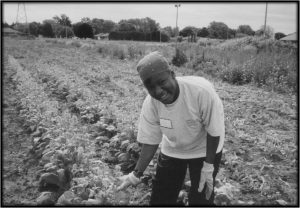Extension’s Impactful History
1862: President Abraham Lincoln signs the Morrill Act, which establishes the nation’s land grant universities and broadens the UW’s academic scope beyond the liberal arts. Most states create new universities separate from their liberal arts institutions to carry out the land grant mission; the Wisconsin Legislature decides that the existing UW will receive the grant.
1891: UW-Madison begins University Extension.
1905: University of Wisconsin President Charles Van Hise details the Wisconsin Idea, saying he’d “never be content until the beneficent influence of the university reaches every family in the state.”
1907: Extension is created as a division of UW-Madison.

1912: E.L. Luther is hired as the first Extension agent in Wisconsin, working in Oneida County. Luther traveled Oneida County on a motorcycle teaching farmers about farm management, crops, and livestock. By the end of 1912 Eau Claire and Barron Counties had a county agent to serve their farm families.
1914: U.S. Congress passes the Smith-Lever Act, which creates a system of Cooperative Extension Services; this act establishes relationships between counties, states, and the US Department of Agriculture and makes federal funds available for Extension activities in states. 4-H is officially established in Wisconsin; Thomas Bewick serves as first Wisconsin State 4-H Leader for 40 years. The oldest 4-H club in Wisconsin is in Walworth County.
1915: 12 county agents are hired across Wisconsin, funded 50% by the University of Wisconsin and 50% by the county where they were based as part of a partnership agreement.
1917: In response to World War I, USDA funds in 1917 provided total support for Emergency Food Agents to encourage accelerated food production through victory gardens, poultry production, and improved milk and crop production to meet wartime demand. Because of this, 27 new agents are hired.
1928: The Capper-Ketcham Act authorizes additional funds for Cooperative Extension, especially for salaries of agriculture, home economics, and 4-H agents.
1938: Cooperative Extension celebrates 25 years in Wisconsin.

1938: State enrollment in 4-H reaches 30,877 members.
1941-1945: Another World War challenges Extension to increase farm production and at the same time promote victory gardens, homemade clothing, and food preservation.
1954: First Farm Progress Days held in Waupaca County; Farm Progress Days later evolved into Farm Technology Days.
1960s: 4-H programs are introduced in several urban centers, including Milwaukee.
1960s: Cooperative Extension begins work on community and economic development in selected areas of the state. Programs become highly sophisticated by the 1970s.
1965: The University Extension Merger combines several extension units formerly part of UW-Madison; Cooperative Extension and the Geological and Natural History Survey become UW-Extension. Cooperative Extension is no longer part of the UW-Madison College of Agriculture.
1968: The Expanded Food and Nutrition Education Program begins.

1974: Master Gardener programs begin in Milwaukee and Waukesha Counties.
1980s: 4-H and youth programs broaden to include an emphasis on family and on community youth development beyond 4-H clubs.
1990s: Partnerships grow as Cooperative Extension collaborates with more public and private groups. Some partnerships result in new funding sources. Extension works with tribal colleges on a variety of programs.
2015: State budget cuts amounted to a reduction of nearly 10% to Extension’s funding, prompting a significant reorganization effort labelled “nEXTgen.” This effort resulted in the programmatic, geographical, and operational model in use today. Six Institutes were created to align Extension’s programming: Agriculture, Community Development, Health & Well-Being, Human Development & Relationships, Positive Youth Development, and Natural Resources.
2017: The UW Board of Regents adopts a resolution to restructure Extension as a division of UW-Madison.
2019: The transition of Extension to UW-Madison is official; as a division of UW-Madison, Extension is the eighth-largest unit on Campus.
This timeline is based in part on The People Came First: A history of Wisconsin Cooperative Extension, by Jerry Apps




